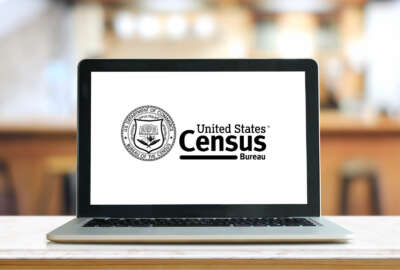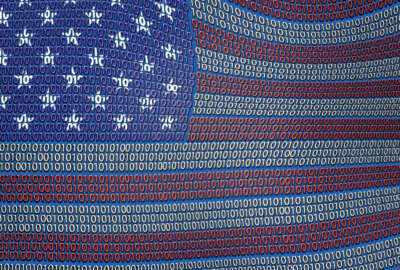
Agencies crowd-sourcing data under strategy to bring ‘science to the masses’
Science-focused agencies have turned to citizen scientists to fill gaps in their data, or have urged members of the industry to develop innovative ideas to prob...
Agencies often collect more data than they know what to do with, but crowdsourcing and gathering feedback from the public can give some programs an opportunity to connect the dots in ways they might not otherwise realize.
Even before the rollout of the Trump administration’s long-awaited Federal Data Strategy, several science-focused agencies have turned to citizen scientists to fill gaps in their data, or urged members of the industry to develop innovative ideas to problems through government-funded prize challenges.
Jay Huie, the acting director of the Office of Products and Programs at the General Services Administration and part of the team behind the Federal Data Strategy, said agencies have entered an era of science that focused more heavily on science and data-sharing.
“There’s this new epoch, really, around data, where the government used to collect it and maybe analyze it and use it. But we’re really starting to see where we’re sharing it, as well as building on data that others have,” Huie said Friday at the Open Innovation Summit hosted by GSA.
At NASA, citizen scientists have done much of the legwork. Marc Kuchner, NASA’s citizen science lead, said crowdsourced projects have helped identify more than 3,500 comets. That’s more than half of all known comets.
Kelvin Droegemeier, director of the White House’s Office of Science and Technology Policy, said citizen scientists collaborating with their colleagues in the government helps members of the public feel more connected to scientific discoveries.
“What you’re doing is you’re bringing science to the masses. You’re letting everyone participate, and understand that they have a role to play in discovery and innovation,” Droegemeier said. “When they participate in it, they have a little stake and they will have skin in the game.”
But Droegemeier said agencies have to strike a balance between a culture of collaboration with the need to ensure data privacy and integrity.
“It’s what has really made the research enterprise what it is today, the fact that we have an open, collaborative, open research environment, sharing results, sharing ideas, sharing data,” he said. “But on the other hand, we are facing threats. So we have to balance the protection of our very wonderful research assets, whether it’s our ideas, our intellectual property, whatever, with the openness of our research environment.”
OSTP releases new data on challenge prizes
Since 2010, federal agencies have awarded more than $250 million in prize money from challenges. In fiscal 2018, the median prize award totaled $75,000, an increase from $50,000 the year before, according to a report released by OSTP on Friday.
“The most common goal of prize competitions is highlighting innovation and engaging new communities,” said Jennifer Shieh, the assistant director of entrepreneurship at OSTP.
Jarah Meador, the director of open innovation at GSA’s Office of Products and Programs, said a rise in the number of prize competitions allow agencies to reach a diverse audience of problem-solvers across the country.
“We’re seeing an increase in the level of sophistication and complexity. We’re seeing prize competitions that really do focus on implementation and impact,” Meador said. “Prize competitions are a useful methodology if you want to only award the best ideas or the best solutions that come out of an initiative.”
In recent years, the National Institute of Standards and Technology have held challenges to develop critical research in broadband technology for first responders. In one challenge, NIST brought in virtual reality developers to prototype a heads-up display for firefighters’ helmets.
“That’s really what this what our program is about, raising awareness. The technology exists, we just have to fill the gaps to bring that technology into the hands of first responders,” said Ellen Ryan, the deputy division chief for public safety communications research at NIST.
Sophia Liu, the innovation specialist at the U.S. Geological Survey, said the agency has been filtering through tweets to pinpoint where minor earthquakes have occurred. The agency also uses its Tweet Earthquake Dispatch Twitter (TED) account to get the word out quickly about earthquakes that have just happened.
In fact, Liu estimated about 90% of TED’s word-of-mouth detections are faster than the agency’s seismometers, which give more robust measurements.
“It’s the difference between currency versus accuracy. I don’t need to know how accurate this person is. It’s more the fact that they talk about it. It’s event detection,” Liu said about the TED system.
John McLaughlin, the manager of GSA’s Citizen Science program, currently on detail from the National Oceanic and Atmospheric Administration, said NOAA has relied on volunteers to drive designated routes with sensors on their cars to study the phenomenon of “heat islands” in urban areas.
Their data showed that some major transit corridors in Washington, D.C. were 16 degrees hotter than less non-trafficked areas, such as parts of Rock Creek Park. Not only did the sensor data better represent the temperature felt by people walking around the city, compared to satellite data, but members of the public were satisfied to contribute to the project.
“Since community members were involved in collecting these data, they feel ownership for them.”
Copyright © 2024 Federal News Network. All rights reserved. This website is not intended for users located within the European Economic Area.
Jory Heckman is a reporter at Federal News Network covering U.S. Postal Service, IRS, big data and technology issues.
Follow @jheckmanWFED




